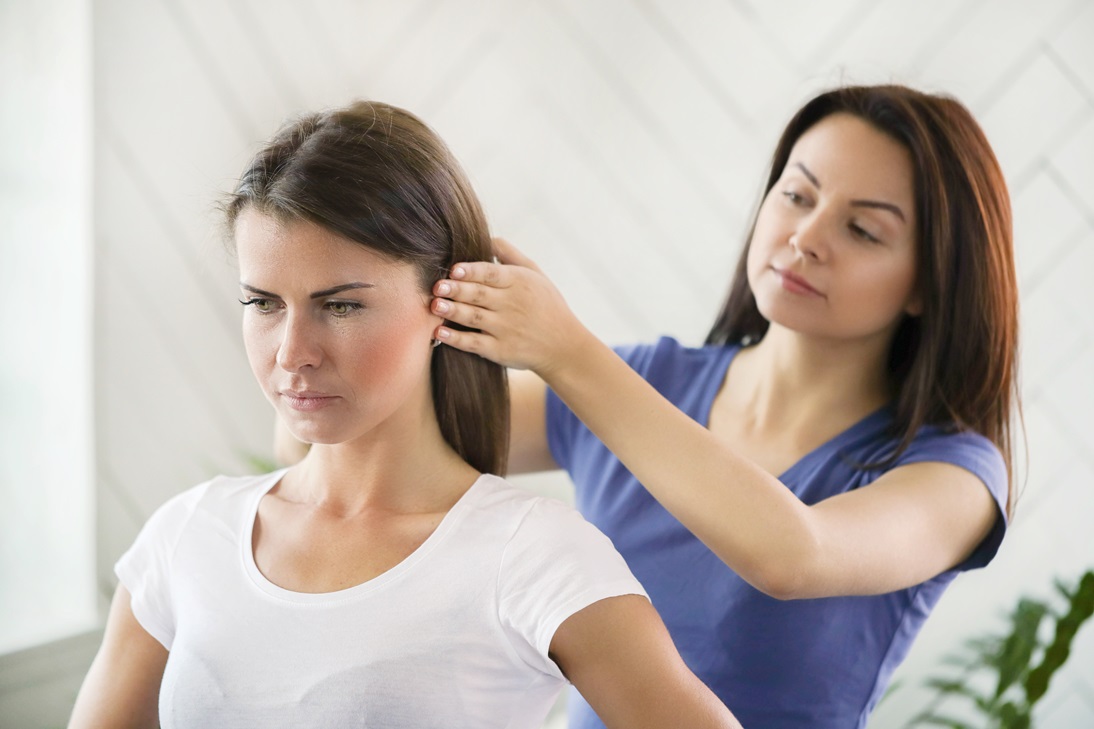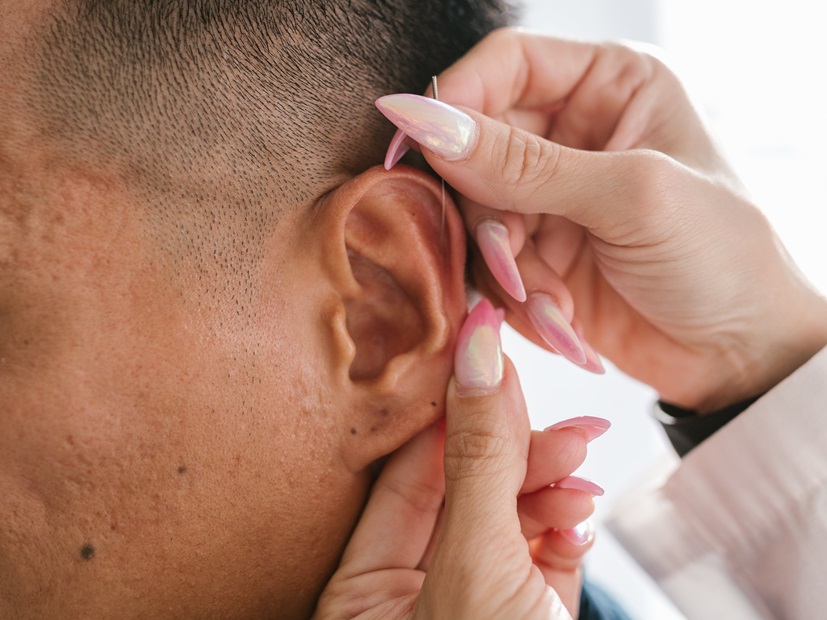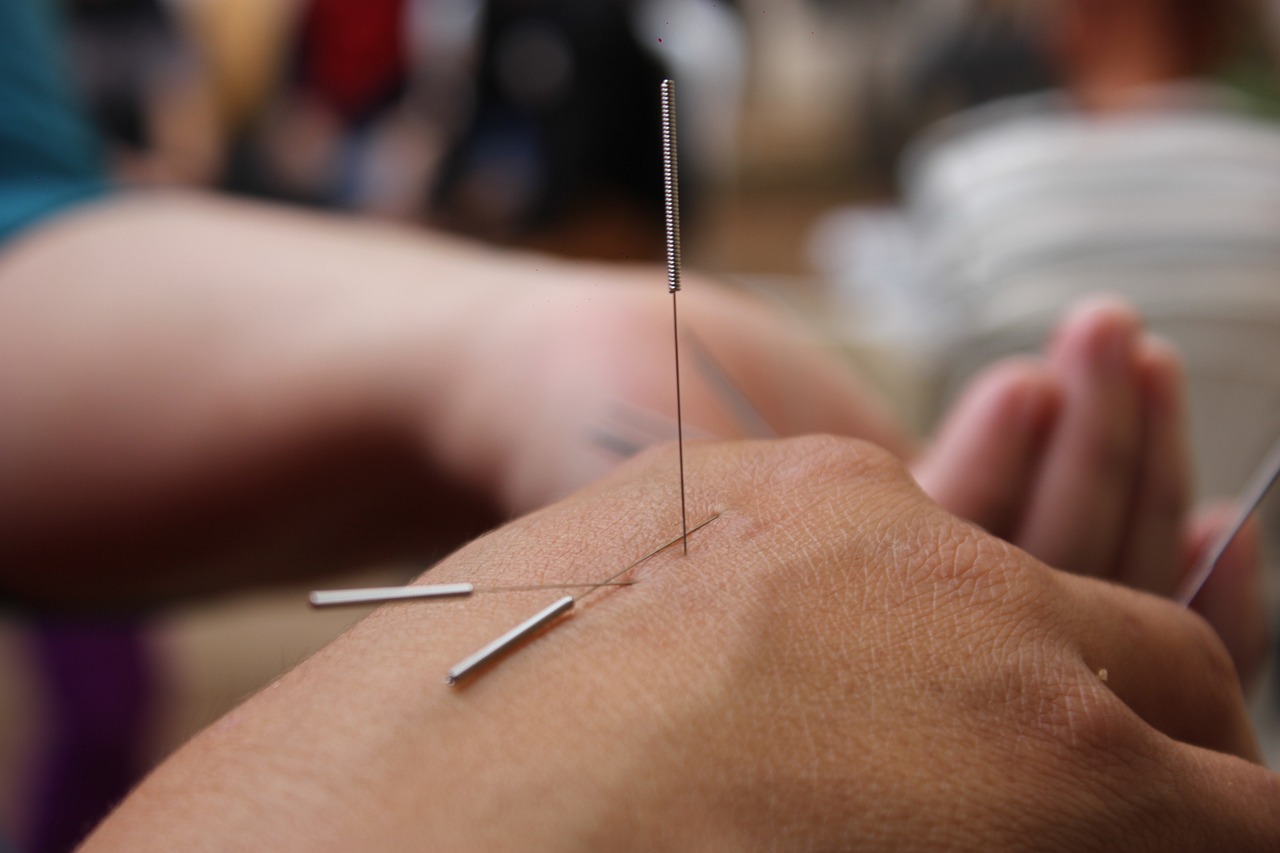In the field of alternative medicine, ear acupuncture, or auricular acupuncture, has gained attention for its potential therapeutic benefits. It involves stimulating specific points on the ear to address various health concerns.
This article explores ear acupuncture points and techniques, looking into the purpose and effectiveness of this ancient practice. We’ll cover its historical background, current applications, and the methods used to activate these points for potential healing.
Whether you’re a practitioner or someone curious about holistic well-being, this exploration aims to provide insights into the principles and applications of ear acupuncture for a better understanding of its therapeutic possibilities.
What Is Ear Acupuncture?
Ear acupuncture, a branch of traditional Chinese medicine, is a therapeutic practice centered on stimulating specific points on the ear to address various health conditions. Also known as auricular acupuncture, this technique is based on the belief that the ear is a microsystem reflecting the entire body.
According to traditional Chinese medicine principles, the ear contains numerous acupoints that correspond to different organs and systems. By applying gentle pressure, inserting needles, or using other methods on these specific points, practitioners aim to restore balance and harmony within the body, thereby alleviating a range of physical and mental health issues.
This holistic approach to healing has gained recognition for its potential effectiveness in pain management, reducing stress, and treating various ailments. Furthermore, ear acupuncture has also been associated with improvements in sleep, emotional well-being, and immune system support. Lastly, this technique can be used as a complementary therapy for various conditions, such as headaches, anxiety, and digestive issues.
Ear Acupuncture Points
Ear acupuncture points, integral to the practice of auricular acupuncture, are located on the ear and believed to correspond to specific organs and systems in the body. The Shen Men point, situated at the center of the ear’s upper part, is often called the “Spirit Gate” and is commonly utilized to alleviate stress and anxiety.
The Omega 2 point, located near the earlobe, is associated with pain relief, making it a key target for addressing various physical discomforts. Positioned at the outermost edge of the ear, the Master Sensorial point is believed to enhance sensory perception and cognitive function.
The Kidney and Liver points, located on the lower ear, are associated with promoting overall organ health and detoxification. Located near the earlobe, Point Zero acts as the origin of all meridians, offering a foundational reset to harmonize the body’s energy and restore overall balance.
The Thalamus point is positioned near the ear and is associated with enhancing neurological function, optimizing sensory processing, and fostering cognitive clarity. In addition, specific points corresponding to the autonomic nervous system regulate bodily functions, promoting equilibrium between the sympathetic and parasympathetic branches for comprehensive stress reduction and nervous system balance.
Addressing glands and hormones, the endocrine points in ear acupuncture contribute to hormonal balance, supporting the overall endocrine system health and offering targeted relief for conditions related to reproductive health, metabolism, and stress response.
Lastly, dedicated to the adrenal glands, the acupuncture adrenal point is strategically stimulated to enhance resilience to stressors, optimize energy levels, and promote overall well-being in individuals facing high-stress lifestyles or dealing with adrenal fatigue.
These are just a few examples of the numerous ear acupuncture points, each serving a distinct function within the framework of traditional Chinese medicine, offering a targeted and holistic approach to health and well-being.
Procedure and Techniques
The effectiveness of ear acupuncture lies not only in the identification of specific points but also in the careful application of techniques. From the traditional use of acupuncture needles to more modern methods like acupressure, magnetic pellets, or ear seeds, the variety of techniques showcases the adaptability of this ancient practice.
Whether aiming for pain relief, stress reduction, or addressing specific health concerns, understanding the nuanced procedures and techniques is essential for practitioners and those intrigued by the holistic benefits of ear acupuncture.
Needle insertion in ear acupuncture
Needle insertion in ear acupuncture involves a systematic and precise technique to ensure therapeutic effectiveness. First, the practitioner thoroughly cleans the ear to maintain hygiene. Next, identifying the specific acupuncture points based on the treatment goal is crucial. Using a thin, sterilized needle, the practitioner gently inserts it into the targeted acupoint at an angle, considering the depth appropriate for the specific point.
Once inserted, the needle may be manipulated slightly to stimulate the point. The process is repeated for each identified point, and practitioners often leave the needles in place for about 20 to 30 minutes to allow for the desired therapeutic effects. It is essential to prioritize the comfort and safety of the individual throughout the procedure, making adjustments as needed.
Alternative techniques

Woman is getting physical therapy from a professional doctor
For individuals who may be hesitant about needle insertion, alternative techniques in ear acupuncture provide accessible and non-invasive options. Acupressure is one such method involving the application of manual pressure on specific ear acupoints using fingers, thumbs, or specialized tools. This technique stimulates the points without using needles, making it a comfortable and needle-free alternative.
Ear acupressure is commonly used for pain management, providing relief from issues such as headaches, muscle tension, and joint discomfort. Additionally, ear acupressure is known for its effectiveness in managing stress and anxiety, promoting relaxation and mental well-being. It may also offer relief for insomnia, digestive issues, respiratory conditions, and menstrual discomfort.
Additionally, the use of ear seeds offers a non-invasive approach. Tiny seeds, often made of metal or plant-based materials, are affixed to specific acupoints on the ear using adhesive tape. Pressure on these seeds from activities like touching or massaging the ear can activate the points and promote therapeutic effects.
Ear seeds are known for their effectiveness in managing pain, including headaches, migraines, and various types of discomfort. They are also used to support stress reduction, alleviate anxiety, and improve sleep quality. Lastly, ear seeds may be employed to address cravings and aid in addiction recovery.
Duration and frequency of sessions
The optimal duration and frequency of ear acupuncture sessions can vary based on individual needs and health goals. Typically, a single ear acupuncture session may last around 20 to 30 minutes, allowing sufficient time to stimulate key acupoints.
However, the frequency of sessions depends on the nature and severity of the health concern. Weekly sessions may be sufficient for individuals seeking general well-being or stress relief. In contrast, those addressing chronic conditions might initially benefit from more frequent sessions, gradually tapering off as symptoms improve.
It’s essential for individuals to work closely with their practitioners to determine the most suitable treatment plan tailored to their specific health objectives. Regular communication with the practitioner can guide adjustments in session frequency and duration, ensuring a personalized and effective ear acupuncture experience.
The Bottom Line
In summary, ear acupuncture, rooted in traditional Chinese medicine, provides a holistic approach to well-being by stimulating specific points on the ear corresponding to different organs and systems. The practices explored include acupressure and the use of ear seeds as alternatives to needles, showcasing adaptability.
Understanding these methods ensures a tailored therapeutic approach, with consideration given to session duration and frequency for optimal results. Whether through needles, acupressure, or ear seeds, ear acupuncture offers a flexible and accessible avenue for those seeking natural health approaches, serving as a resource for practitioners and individuals interested in enhancing physical and mental well-being.
FAQ
What are the most important ear acupuncture points?
The most important ear acupuncture points are often determined based on the specific health concerns of the individual. However, some key points frequently targeted in auricular acupuncture include Shen Men for stress relief, Omega 2 for pain management, Master Sensorial for cognitive function, Kidney and Liver points for overall organ health, Point Zero as an origin point, and Thalamus Point for central nervous system regulation.
What are the benefits of ear acupressure?
Ear acupressure offers various benefits, including:
- Pain Management: Alleviates headaches, migraines, and muscle tension.
- Stress Reduction: Promotes relaxation and helps manage anxiety.
- Improved Sleep: Addresses insomnia and supports better sleep quality.
- Digestive Support: Aids in managing digestive issues like indigestion and bloating.
- Emotional Well-being: May reduce symptoms of depression and improve overall mood.
- Respiratory Relief: Alleviates symptoms of allergies and sinus congestion.
- Menstrual Comfort: Helps ease menstrual cramps and regulate menstrual cycles.
- Energy Boost: Aids in combating fatigue and boosting overall energy levels.
- Immune System Support: Stimulates points associated with the immune system, contributing to overall health.
- Complementary to Addiction Recovery: Assists in managing cravings and supporting addiction recovery.
What are the side effects of ear acupuncture?
While ear acupuncture is generally safe, some individuals may experience mild side effects, including:
- Temporary Discomfort: Sensations like warmth, tingling, or mild pain at the acupuncture points during or after the session.
- Bruising or Swelling: Occasional bruising or swelling at the needle insertion sites.
- Dizziness or Lightheadedness: Particularly if one stands up too quickly after a session.
- Infection Risk: Although rare, there is a minimal risk of infection at the needle insertion sites if proper hygiene is not maintained.
It’s crucial to consult with a qualified practitioner to ensure the procedure is appropriate for individual health conditions and to minimize any potential side effects.

